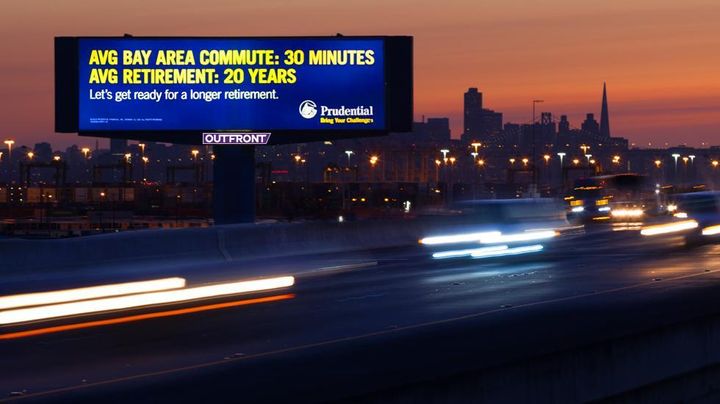
“The future is already here, it's just not evenly distributed(and it's not coming to you without your own effort.”). - Novelist William Gibson
When Exxon says they are “Energy Futurists”, or a railroad company classifies its industry as “transportation logistics”, they are acknowledging something which, only years ago, would have been uncomfortable to do. These companies now appreciate that they are in rapidly evolving worlds and that the risk equations have changed – because of advancing technology, social habits, global markets, dynamic cost curves and nimble competition. They must find new growth areas and adopt cultures of constant change. Admitting this may be scary at first, but embracing it is powerful.
To simply supply box cars to customers who want to move goods around the country would be short-sighted. To stick only to traditional oil drilling and gas stations would be considered myopic today given modern shale extraction techniques, vast natural gas supplies, electric cars, sustainability and concern for the planet. Entire industries are changing to keep up.
Similarly, there is unease around the billboard industry as Tesla, Apple, Google, Uber and others bring their autonomous vehicle projects to market. Are billboards, viewed on the sides of highways, going to retain the same value as drivers become passengers and mobile devices garner even more of peoples’ attention?
The answer is simple: we are not in the billboard industry. We compete across an intelligent Out of Home (OOH) advertising market. This means we will provide our clients with access to a platform of solutions that enable them to reach audiences while those consumers are outside their homes, regardless of the medium. At OUTFRONT Media, our main assets are our 400,000+ locations in highly populated areas and our strong sales teams, focused on providing solutions to clients using location-based media. How we use these assets in combination, is the key.
MULTIPLE MEDIUMS @ WORK
As an industry, we debate the use of terms such as “OOH” vs “Location-based” media. Both are correct, of course. We use our substantial asset estate as a way to launch campaigns to audiences outside their homes with location as a data cornerstone – but across a myriad of displays. We use static billboards, dynamic digital displays and mobile integrations with each advertiser. Cars too will have internal displays to which a form of non-evasive advertising can be directed, adding to our OOH networks.
As Kevin Foreman from INRIX touts, “the initial stages of autonomous driving will be a boon for traditional OOH – when drivers are still behind the wheel, but with more time to look around”. As cars reach the later phases (full autonomy) we, as an industry, will have to dedicate more of the ad campaign to mobile or in-car displays. Mobile devices are out-of-home assets - 70% of the time[1]. The OOH industry is already influencing consumers via in-app advertisements using sophisticated geo-fencing with partners like Ground Truth, and by the use of mobile phone decks through Wi-Fi and beacons, all anchored by a location.
Data assembled about audiences at our locations, provides important signals with regard to their preferences, psychographic mindsets, intent and as a measure of ROI via reactions to behavioral triggers. (Did a consumer group change its normal pattern based simply on a message delivered by one of our campaigns?) Integrating those data sets with those of our clients, will create real ROI metrics for post campaign evaluations and more insightful planning as we “close the loop”.
Multiple mediums reinforce each other. Mobile ads, offered by OOH companies, provide advertisers with enhanced audience targeting, unique experiences and a point through which customers can engage with brands. When a mobile ad is combined with OOH displays, our undeniable results prove that consumers engage 48% more than with mobile alone[2].
EARNING ATTENTION THROUGH AN ENHANCED EXPERIENCE
OOH industry publishers also have evolved transit businesses (bus shelters, subway station displays, screens on trains, kiosks) which are not affected by autonomous vehicles. Both digital large format roadside boards and new small format transit displays are now capable of delivering robust video programming with integrated social feeds and real-time communications. It makes these signs more valuable to audiences when they show live sports scores, top plays, real time news/social feeds, and community or emergency messaging through robust content. These networks must earn the attention of audiences (including car passengers) despite other distractions. A curated experience focused on a true value exchange between network publishers and audience is important. As drivers have additional attention to spare – they will focus more on external displays and on their phones where we can provide an integrated encounter but only if it is worth their time. The science of signal reinforcement is on display (pun intended) to begin true omni-channel marketing. This is not your grandfather’s OOH industry.
So back to billboards and those autonomous cars. If you look at a billboard only as a 14’x48’ vinyl sign on a steel post, rather than a dynamic audience influence opportunity at a data-rich location, with a constantly connected mobile broadcast tower, that has the capability to integrate large format 1-to-many dynamic content with individualized 1-to-1 mobile engagements and real-time measurement…you’re missing the point. Indeed, as EMC Outdoor points out, “Mobile-sourced geographic targeting segmentation is still in its infancy, and will only become more accurate, more powerful, faster…”. Our sign structures are now home to many new telecommunications and IOT devices from partners like Sigfox which will help autonomous vehicles navigate surrounding environments. In a connected-world, OOH companies’ locations play critical roles throughout the ecosystem. At OUTFRONT, we have adopted a constant-change culture and are advancing innovative product sets for our clients’ needs as technology and the world, evolve.
In an autonomous vehicle future, traditional views of static vinyl campaigns may change over time and anticipated gains far outweigh any risks. To advertisers and marketers, the value of these new technology integrations is exponential. The vast majority of billboards today are underpriced relative to their audience delivery, especially when you consider lack of fraud, undeniable view-ability, complete transparency, brand safety, etc. Our media campaigns will soon have robust measurements for media mix modeling and comparative selling to prove that value arbitrage. The integration between fixed location displays and mobile devices brings even more value; above that which static audience measurement alone will prove (data loops, one-to-one targeting, spectacular digital creative, multiple display message reinforcement, ROI, client web integrations, HTML content, etc.) And, our locations themselves have additional revenue opportunities as they are assimilated into broader telecommunications networks.
The fear of unknown futures may cause some participants across different industries to recoil. Less savvy companies, or those without sufficient scale or capital, may consider strategic alternatives. But for those that see what’s coming and have the human and financial resources to participate in this transformation – the world is an exciting place.
We are in the contemporary media and technology business – connecting clients to audiences, outside their homes.
###
[1] Source: Outdoor Advertising Association of America, Inc.
[2] Source: Ocean Neuroscience, “Beyond Out of Home, The Science Behind the Art of Outdoor,” 2015
